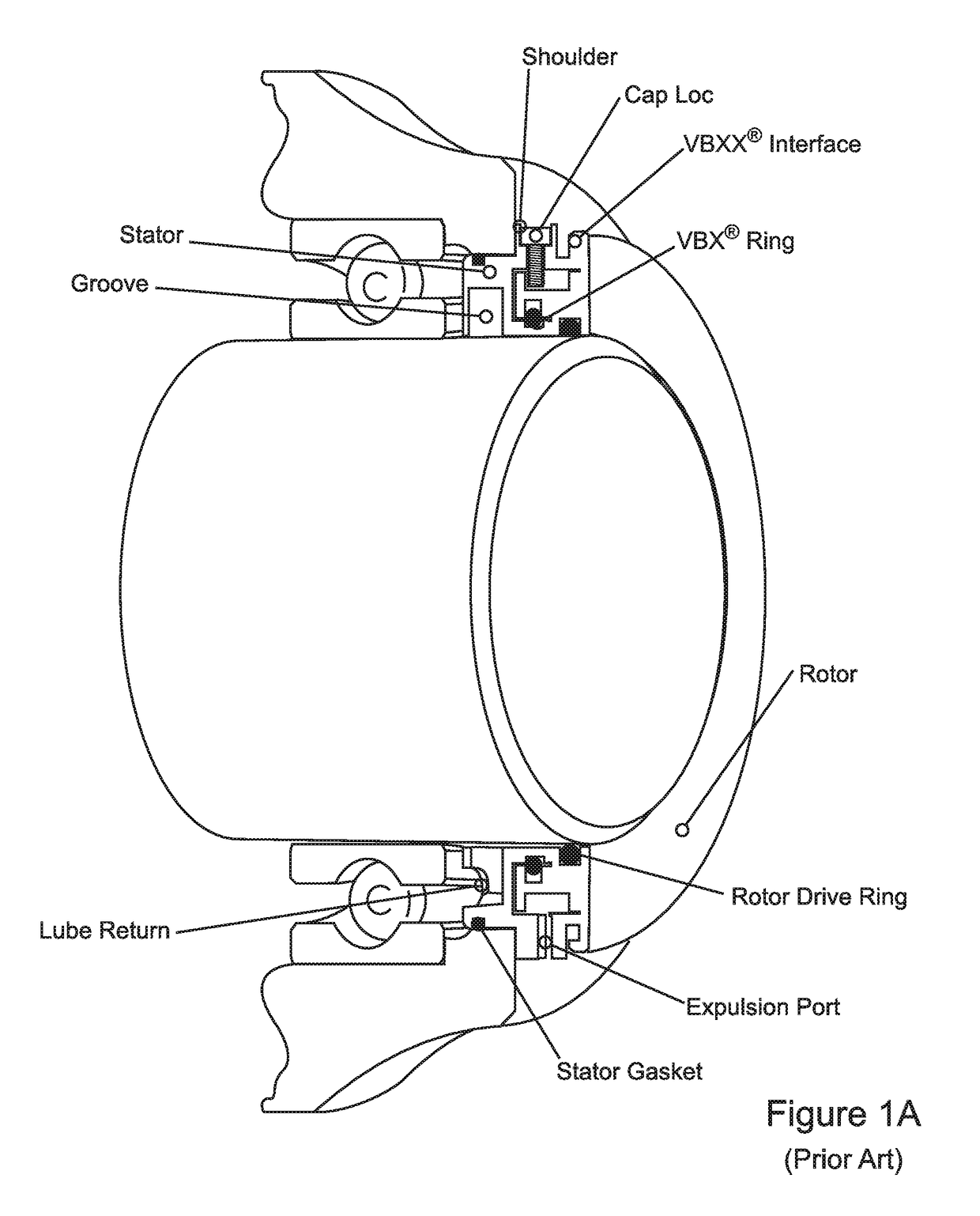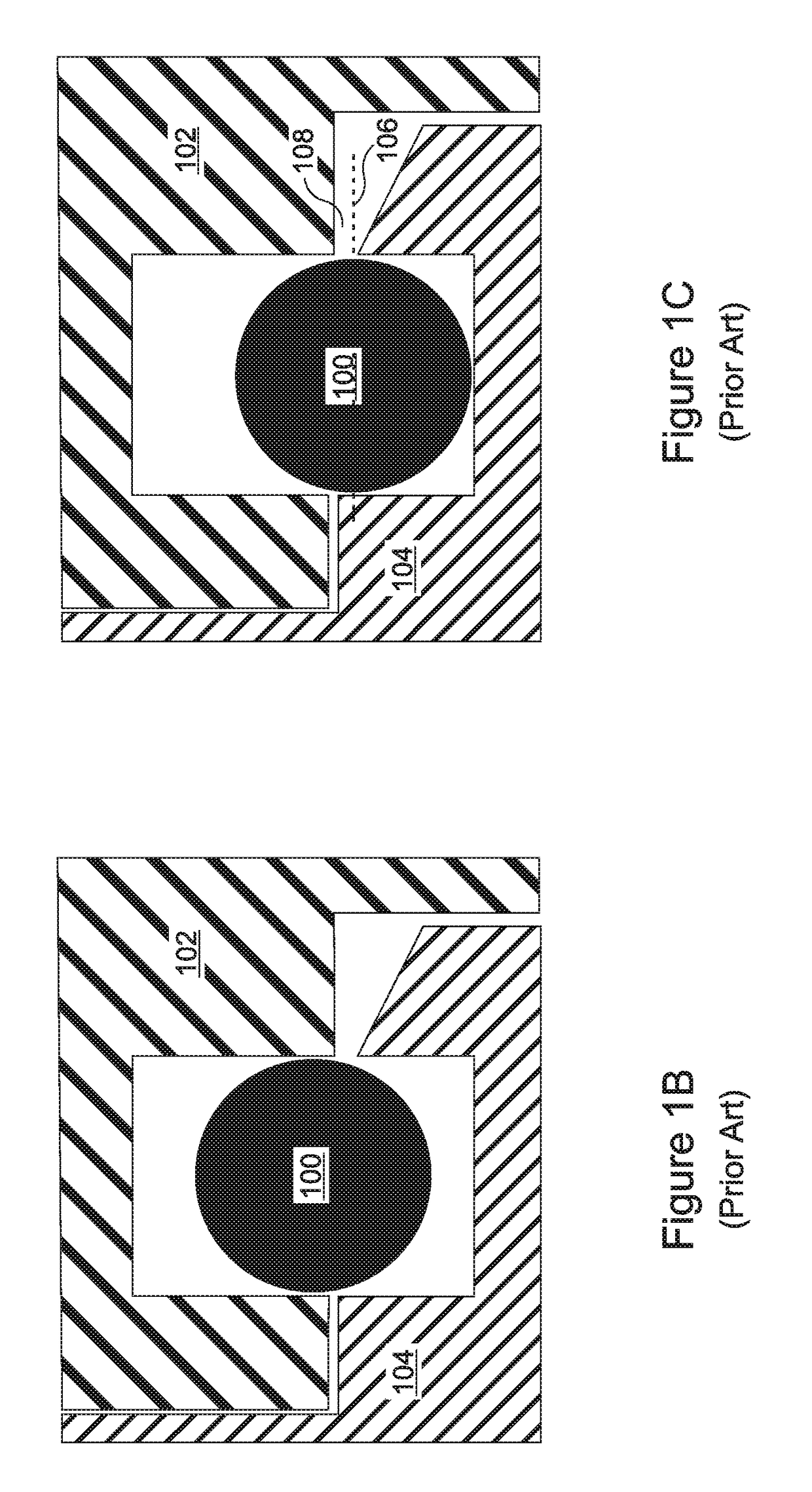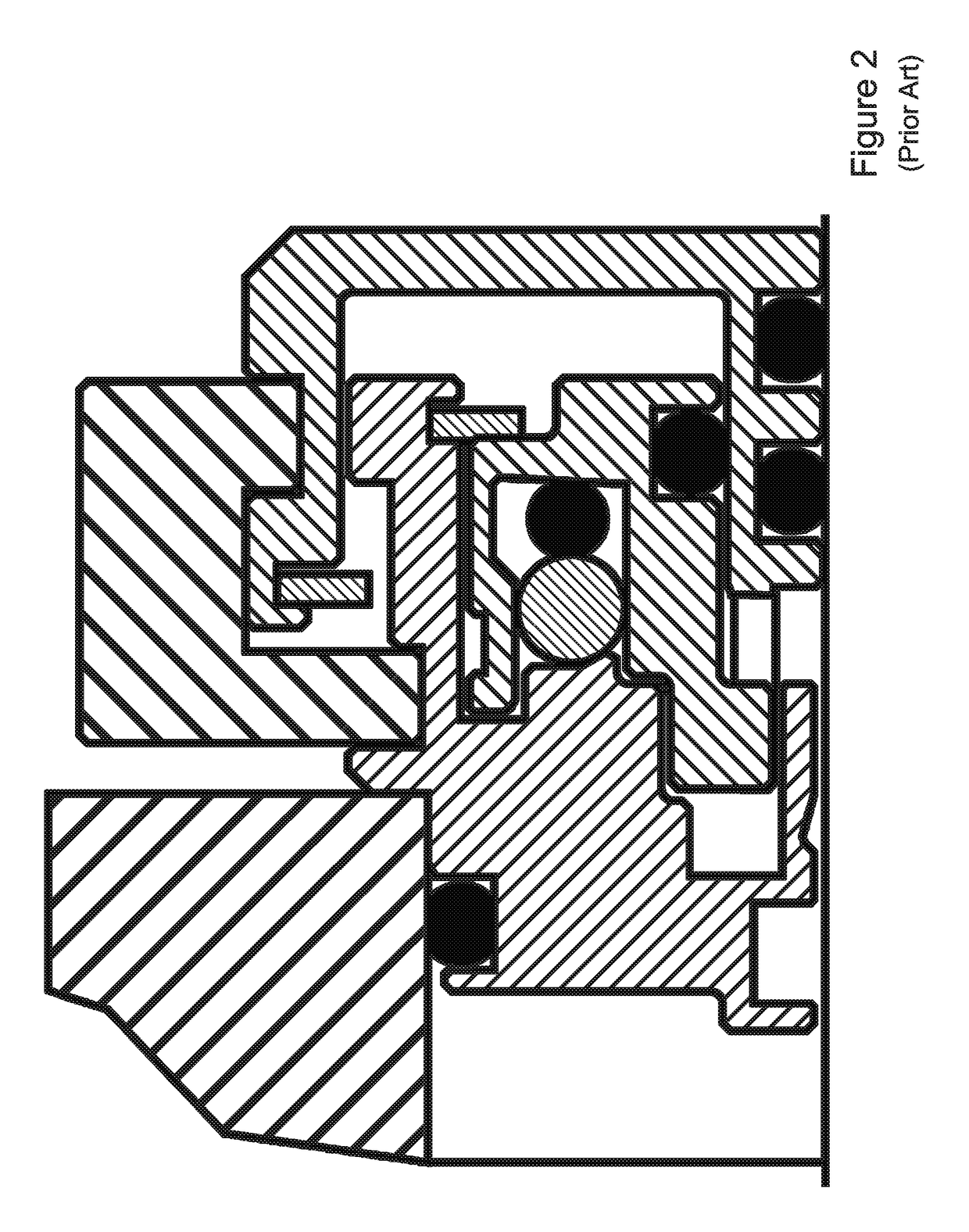Bearing isolator seal with tapered static shutoff O-ring interface
a static shutoff o-ring and isolator technology, which is applied in the direction of engine seals, shafts and bearings, bearing components, etc., can solve the problems of affecting the service life of rotating equipment, so as to improve the static seal and minimize wear and resistance , the effect of cost-effectiveness
- Summary
- Abstract
- Description
- Claims
- Application Information
AI Technical Summary
Benefits of technology
Problems solved by technology
Method used
Image
Examples
Embodiment Construction
[0032]The present invention is a cost effective bearing isolator seal, including a static shut off feature based on a shut off O-ring, that is tolerant of axial misalignment between the rotor and stator, provides an improved static seal between the rotor and the stator, and minimizes wear and resistance when the rotor is rotating relative to the stator.
[0033]With reference to FIG. 3A, the stator 300 of the bearing isolator seal includes a tapered section 302 located in an inboard region of the interface between the rotor 304 and stator 300, adjacent to the shut off O-ring 306. Because FIG. 3A is a cross-sectional illustration, the tapered section appears as in inclined section. When the rotor 304 is static, and there is no axial misalignment between the rotor 304 and the stator 300, the shut off O-ring's nominal inside diameter is pressed against the tapered section 302 of the stator, forming an enhanced static seal. The angle of the tapered section 302 is toward the rotor 304, whic...
PUM
 Login to View More
Login to View More Abstract
Description
Claims
Application Information
 Login to View More
Login to View More - R&D
- Intellectual Property
- Life Sciences
- Materials
- Tech Scout
- Unparalleled Data Quality
- Higher Quality Content
- 60% Fewer Hallucinations
Browse by: Latest US Patents, China's latest patents, Technical Efficacy Thesaurus, Application Domain, Technology Topic, Popular Technical Reports.
© 2025 PatSnap. All rights reserved.Legal|Privacy policy|Modern Slavery Act Transparency Statement|Sitemap|About US| Contact US: help@patsnap.com



